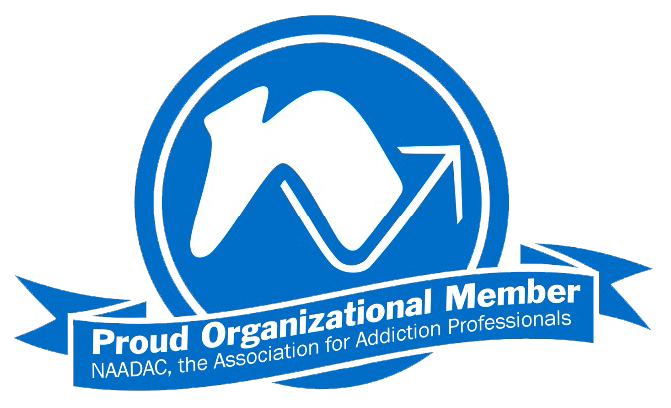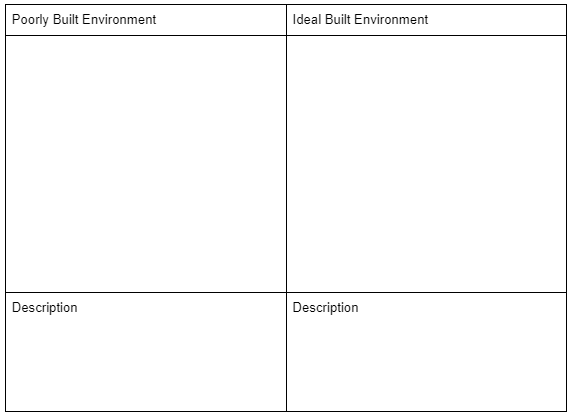-
GeneralGeneral
-
Wellness in the Workplace Homepage


Welcome to the Wellness in the Workplace course. This course is designed to provide students with an understanding of the context surrounding workplace wellness promotion. It provides an opportunity for participants to gain knowledge regarding wellness program needs, the theories behind changes in health behaviors, and the planning, implementation, and evaluation of wellness programs. The course is intended for health professionals, community health workers, primary care workers, and laypeople involved in occupational health.
The Wellness in the Workplace course is based on competencies from the Update on Validity of Required Competencies for Worksite Health Professionals. American Journal of Health Education. It uses learning resources from accredited, world-class organizations such as the World Health Organization, Public Health Agency of Canada, Centers for Disease Control and Prevention, Institute for Health and Productivity Studies Johns Hopkins Bloomberg School of Public Health In collaboration with Transamerica Center for Health Studies, Harvard University. The Wellness in the Workplace course was created with the efforts of Cirisse Stephen, MD and was designed by the NextGenU.org team: Pablo Baldiviezo, MD, DiplEd.; Genikka Camille Gabral, B.ED, MSc; and Hugo Rojas, MD, MSc, DiplEd;
For publications on NextGenU.org’s courses’ efficacy, see the NextGenU.org’s publication page. Subscribe to our newsletter to be notified of future updates, new courses, and to be part of our community.
There are 4 modules to complete, which provide an introduction to:
- Module 1: Introduction to Workplace Wellness Promotion
- Module 2: Needs Assessment and Program Planning
- Module 3: Implementation and Evaluation of Workplace Wellness Programs
- Module 4: Mental Health and Substance Use Disorders
The completion time for this course is estimated at 87.8 hours, comprising 15.8 hours of learning resources, 31.5 hours for time to study content and assimilation, and 40.5 hours of participating in learning activities and quizzes, to assist the learners in the synthesis of learning materials. This course is equivalent to 2 credit hours.
The course requires completion of all discussion forums. At the end of each module, there is a practice quiz of ten (10) multiple-choice questions. After you’ve completed each module, quiz, and learning activity, at the end of the course, you’ll have access to a final exam consisting of twenty (20) multiple-choice questions, and a chance to evaluate this course. Participants have up to three opportunities to take the final exam and achieve the required score of >=70%.
Once you’ve passed that last test, you will be able to download a certificate of completion from NextGenU.org and our course’s co-sponsoring organizations. We keep all of your personal information confidential, never sell any of your information, and only use anonymized data for research purposes. Also, we are happy to report your testing information and share your work with anyone (your school, employer, etc.) at your request.
Engaging with this Course:
You may browse this course for free to learn for your personal enrichment; there are no requirements.
To obtain a certificate, a learner must first register for the course and then successfully complete:
- All the reading requirements,
- All quizzes and pass with a 80% with unlimited attempts,
- All discussion forums,
- The final exam with a minimum of 80% and a maximum of 3 attempts, and
- The self and course evaluation forms.
To obtain credit:
- Complete all requirements listed above for the certificate, and
- Your learning institution or workplace should approve the partner-university-sponsored NextGenU.org course for educational credit, as they would for their learner taking a course anywhere.
NextGenU.org is happy to provide your institution with:
- A link to and description of the course training, so they can see all its components, including the cosponsoring universities and other professional organization cosponsors;
- Your grade on the final exam;
- Your work products (e.g. case study activities), and any other required or optional shared materials that you produce and authorize to share with them;
- Your evaluations -- course, and self-assessments;
- A copy of your certificate of completion, with the co-sponsoring universities and other organizations listed.
To obtain a degree, NextGenU.org co-sponsors degree programs with institutional partners. To obtain a full degree co-sponsored with NextGenU.org, registrants must be enrolled in a degree program as a student of a NextGenU.org institutional partner. If you think that your institution might be interested in offering a degree with NextGenU.org contact us.
We hope that you will find this a rewarding learning experience, and we count on your assessment and feedback to help us improve this training for future students.
Here are the next steps to take the course and earn a certificate.
- Complete the registration form.
- Take the pre-test.
- Begin the course with Module 1: Introduction to Workplace Wellness Promotion. In each lesson, read the description, complete all required readings and any required activity, as well as take the corresponding quizzes.
This course meets nationally approved standards of education developed for the addiction/substance use disorders counseling profession. This course's participants are assured that the continuing education (CE) credits provided will be accepted toward national credentialing by the NAADAC Certification Commission for Addiction Professionals (NCC AP), as well as by many of the individual state licensing/certification bodies in the addiction and other helping professions.
-
Module 1: Introduction to Workplace Wellness Promotion
 Competencies covered in this module:
Competencies covered in this module:- Explain the purpose and benefits of workplace wellness promotion in the context of the determinants of health and the population health approach.
- Interpret theories related to health behaviour change and their relationship with workplace factors and concepts that influence the health and wellbeing of employees.
-
Module 1: Lesson 1: Workplace Wellness in the Context of the Determinants of Health and the Population Health Approach
Student Learning Outcomes:
Upon completion of this lesson, you will be able to:
- Describe the determinants of health recognized by the WHO.
- Identify the evidence that supports the underlying premises of each of the key determinants of health.
- Identify key aspects of the Population Health Approach and its role in workplace wellness.
- Describe the purpose of a workplace wellness program, and the main benefits for employers, individuals, and organizations.
- Discuss the factors that must be addressed to create a comprehensive workplace wellness program.
6 URLs, 1 Forum -
Module 1: Lesson 2: Building Active Environments to Promote Wellness in the Workplace
Student Learning Outcomes:
Upon completion of this lesson, you will be able to:- Describe how different factors influence health outcomes based on the ecological model in public health and workplace health promotion networks.
- Explain the meaning of "built environment" and how it influences people's health.
- Summarize evidence of different workplace wellness interventions and their associated health outcomes.
- Describe the concept of active design and its guiding principles.
8 URLs, 1 Forum -
Module 2: Needs Assessment and Program Planning

Competency covered in this module:
- Assess the characteristics and needs of specific workforces and organizations for the planning of workplace wellness programs.
- Examine recommendations for developing a workplace wellness program plan, including establishing program policies, procedures, and budgeting.
- Assess the characteristics and needs of specific workforces and organizations for the planning of workplace wellness programs.
-
Module 2: Lesson 1: Assessing Workplace Needs to Build "Wellness"
Student Learning Outcomes:
Upon completion of this lesson, you will be able to:- Describe multiple workplace wellness programs that demonstrate the importance of tailoring programs to different workers' needs.
- Analyze the demographics and characteristics of specific workforces and organizations to identify wellness program needs.
- Describe common aspects explored in survey-based needs assessments, with examples.
6 URLs, 1 Forum -
Module 2: Lesson 2: Planning a Workplace Wellness Program
Student Learning Outcomes:
Upon completion of this lesson, you will be able to:- Summarize common steps and components of a workplace wellness plan.
- Describe the characteristics of clear and reachable goals.
- Reflect on the best practices to promote workplace wellness and their importance for program planning.
6 URLs, 1 Forum -
Module 3: Implementation and Evaluation of Workplace Wellness Programs

Competency covered in this module:
- Examine the steps and recommendations to implement a workplace wellness program using appropriate marketing and communication resources to foster employer engagement.
- Assess different frameworks for the evaluation of workplace wellness and promotion programs, paying particular attention to the types of evaluations and outcomes of interest along with tools and methods available to report and apply evaluation findings.
-
Module 3: Lesson 1: Implementing an Effective Workplace Wellness Program
Student Learning Outcomes:
Upon completion of this lesson, you will be able to:- Examine workplace wellness implementation strategies and processes along with lessons learned from implementation case studies.
- Explain the importance of branding and communication strategies to improve program engagement along with best practices for their implementation.
5 URLs, 1 Forum -
Module 3: Lesson 2: Evaluating the Effectiveness of Workplace Wellness Programs
Student Learning Outcomes:
Upon completion of this lesson, you will be able to:- Examine the definition, types, and steps to perform a program evaluation according to different frameworks along with common outcomes of interest of evaluation programs.
- Discuss the available tools used to evaluate a program's success and to effectively report evaluation findings.
5 URLs, 1 Forum -
Module 4: Mental Health and Substance Use Disorders
 Competency
covered in this module:
Competency
covered in this module: Understand the different types of substances commonly used in the workplace, their effects, methods of use, signs and symptoms of substance use disorder, and how they can affect the workplace. - Understand mental health in the workplace, its common problems, illnesses, disorders and how significant its impact in the workplace is.
-
Module 4: Lesson 1: Substance Use in the Workplace
Student Learning Outcomes:
Upon completion of this lesson, you will be able to:- Explain what is substance use disorder, the types of commonly used substances, and the implications of substance use for the workplace.
- Discuss strategies, interventions, and policies that can be applied to manage substance use in the workplace.
4 URLs -
Module 4: Lesson 2: Mental Health in the Workplace
Student Learning Outcomes:
Upon completion of this lesson, you will be able to:- Explain common mental health issues and the importance of promoting mental health in the workplace.
- Discuss the strategies, actions, and policies that can be done to manage mental health in the workplace.
4 URLs, 1 Forum -
Course and Self Evaluation & Certificate
 In this section, you can provide feedback about this course to help us make NextGenU.org better. Once evaluations are completed, you will be able to download your certificate of completion.
In this section, you can provide feedback about this course to help us make NextGenU.org better. Once evaluations are completed, you will be able to download your certificate of completion.


